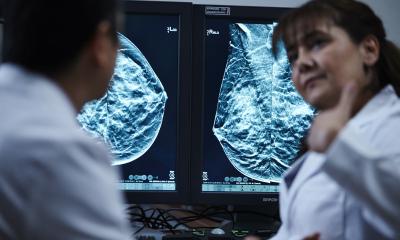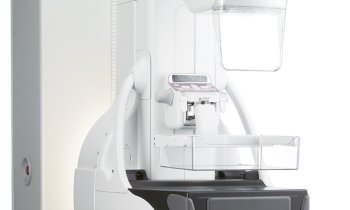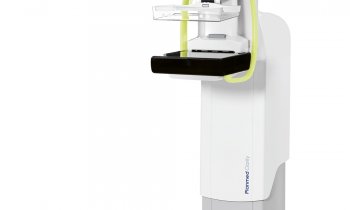Image source: Adobe Stock/guguart
Article • Key findings of latest survey
Women’s health: solutions for a growing problem
Awareness of the importance of women’s health is on the rise, but many challenges remain: At ECR 2024 in Vienna, we spoke with Hologic about their continued evaluation of healthcare efforts for women. At the congress, the company also shared how AI could be used to mitigate the effects of medical staff shortage.
Report: Wolfgang Behrends
Presenting the latest insights from the “Global Women’s Health Index” (GWHI), the experts declared that even though the Covid-19 pandemic has in many ways been overcome, the medical situation for many women has not improved. The index, a collaborative survey from Hologic and polling company Gallup which has now completed its third year, aims to provide a baseline account of women’s health worldwide across various dimensions, such as basic needs, emotional health, and preventive care. Tanja Brycker, Vice President of Strategic Development, Breast and Skeletal Health and Gynecological Surgical Solutions at Hologic, said: ‘We found it wasn’t just because of the pandemic – it’s actually gotten worse.’
Recommended article

Article • Hologic at ECR 2022
Painting a global picture of Women’s health
At the ECR 2022 congress in Vienna, Hologic went beyond just showcasing new systems for women’s health. Additional focus topics were the mitigation of the pandemic impact on screening programmes and the situation of women around the world without access to advanced diagnostic technologies – or even the most basic standards of healthcare.
Key findings of the latest survey – with over 147,000 participants from 143 countries – suggest that the gap of health standards between high- and low-income countries has further increased. The ongoing lack of preventive measures is especially worrying, the expert pointed out. This results in a growing risk of maternal and fetal mortality but is also reflected in low accessibility of vital medical tests, for example for cancer, hypertension, diabetes and STIs.
While conditions have been found to be particularly troubling in several African and Central Asian territories, even in more industrially developed countries things are far from perfect; Taiwan, which once more tops the list, only scored 72 of a possible 100 points, demonstrating that there is still plenty room for improvement. ‘While women’s health is relatively strong in some EU countries, important unmet needs remain,’ Brycker said. With health issues like heart disease and breast cancer being leading illnesses, over half of women did not receive any preventative testing. Therefore, efforts should be made to increase awareness for and improve access to screening programmes, she added.
AI vs staff shortage
As a company specialising in medical technology, Hologic is exploring the potential of new imaging techniques and artificial intelligence (AI) to mitigate current shortcoming of healthcare systems. One focus topic at ECR was the adoption of digital breast tomosynthesis (DBT) for breast cancer screenings. After proving its benefits in several clinical investigations – notably, the recently completed TOSYMA study – European guidelines have started recommending the use of DBT in women with dense breast tissue.
Recommended article

Article • Digital breast tomosynthesis
Transforming breast screening: The role of AI in improving reading workflow
While having more centers adopt digital breast tomosynthesis (DBT) for breast cancer screenings into their practice is a positive change, it also presents some challenges for radiologists—particularly the increased number of images for radiologists to review. This challenge has paved the way for AI to offer innovative workflow solutions for radiologists that do not sacrifice accuracy.
To exploit the benefits of this imaging technology, recent efforts have focussed on implementing AI to improve workflows and provide personalised screenings. The relevance of these aspects is highlighted by the growing shortage of medical personnel. According to Brycker, AI can be used to address these issues on several levels:
- Optimised workflow scheduling increases imaging capacities, so more patients can be screened in a given time
- Smart systems that automatically adapt to patient positioning both reduce time and staff needed per screening
- Image analysis and interpretation support can reduce false-positive findings and potentially shorten the time between screening and diagnosis
Recent findings from the McKinsey Health Institute estimate the global economic potential of improving women’s health to be in the vicinity of one trillion US dollars. ‘When women suffer, so does everyone around them,’ Brycker pointed out. An increasing awareness of gender-specific health issues and more specific diagnostics and therapies would therefore not only save many lives and avert suffering, but also lead to greater social stability and economic benefits.
14.03.2024











